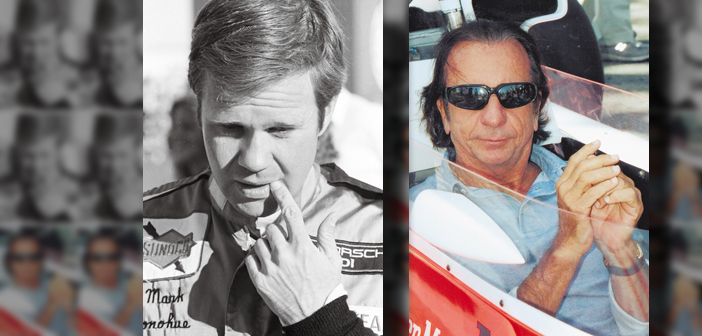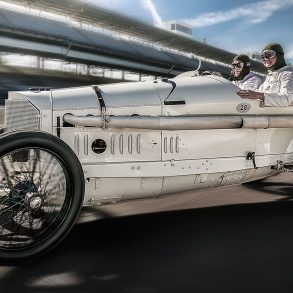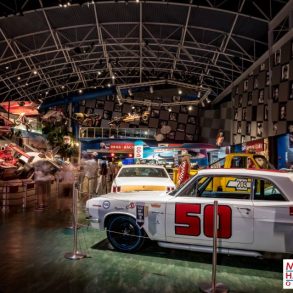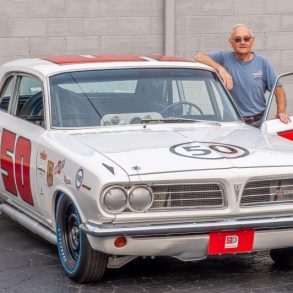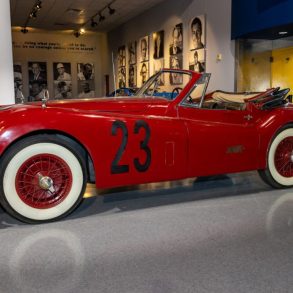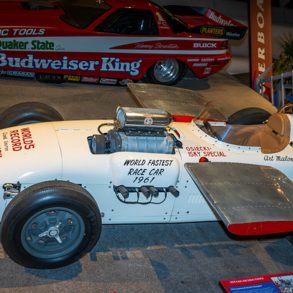Five legendary names from the Indianapolis 500 will assume their place among racing legends May 21 at the 2004 Auto Racing Hall of Fame induction ceremonies. The event is taking place at the Indianapolis Marriott Downtown in conjunction with the annual “500” Oldtimers’ Club Banquet.
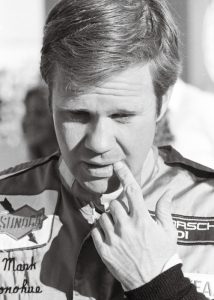
The Auto Racing Hall of Fame honors drivers, team owners, mechanics and event officials who have made significant contributions to the success and colorful history of the sport of open-wheel racing.
Mark Donohue, from Summit, N.J., won the 1972 Indianapolis 500 driving for legendary team owner Roger Penske. Donohue’s brief tenure at the Speedway was one of the most impressive in history, as he also earned Rookie of the Year honors in 1969 and followed with a 2nd place finish in 1970. He was leading and had just set a record race lap when mechanical problems sidelined him in 1971. Similar problems ended an impressive run in 1973, his final Indianapolis 500.
Emerson Fittipaldi, from Sao Paulo, Brazil, first came to the Speedway in 1984 after a stellar 11-year Formula One career that included World Championships in 1972 and 1974.
His success continued at Indianapolis, where he won “The Greatest Spectacle in Racing” in 1989 and 1993. He also earned a total of five top-10 finishes in 11 starts at Indy, plus the prestigious pole in 1990.
Lindsey Hopkins, from Miami, was a stalwart in championship open-wheel racing from 1951–82, entering as many as four cars for the Indianapolis 500 in some years, even when sponsorship could not be obtained. Although Hopkins never won the “500,” he finished 2nd with driver Jim Rathmann in 1957 and 1959. Roger McCluskey, a longtime Hopkins driver, won the 1972 Ontario 500 and 1973 USAC championship.
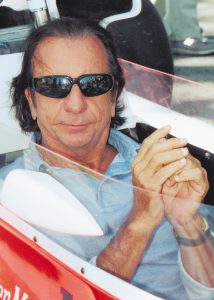
Photo: Susan Myers
Tom Sneva, affectionately known as “The Gas Man” for frequently sitting atop the speed charts, was the first driver to officially break the 200-mph and 210-mph barriers at Indianapolis in 1977 and 1984, respectively. Tom Sneva scored a popular victory at the 1983 Indianapolis 500, after having been a three-time runner-up in 1977–78 and 1980. His ability to push a car to its limits also warranted three Indy pole positions in 1977–78 and 1984, and he nearly won a record third consecutive pole in 1979.
John Zink, a successful businessman from Tulsa, Okla., was a premier car entrant in open-wheel racing from the mid-1950s to the mid-1960s he won the Indianapolis 500 in back-to-back years with two drivers, Bob Sweikert in 1955 and Pat Flaherty, in 1956.


